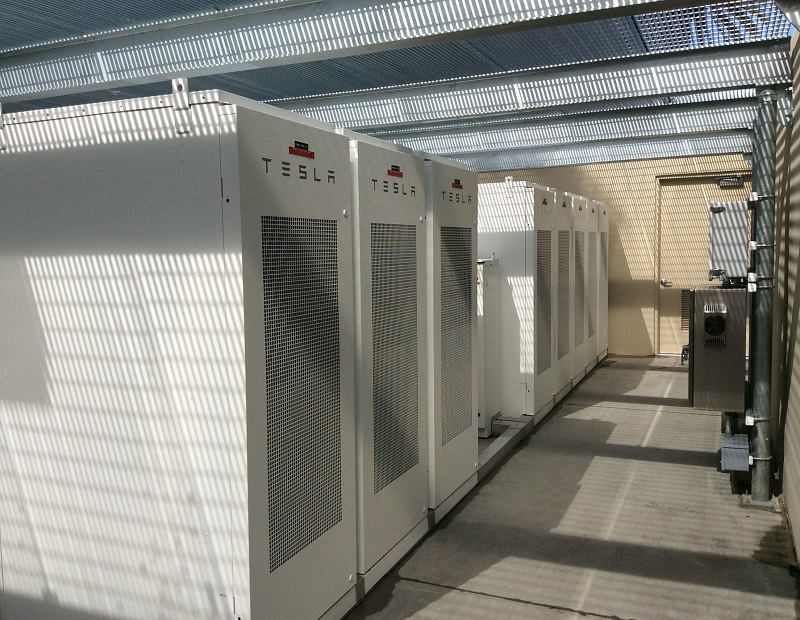Record-Setting CA Battery Projects Advance
In a first, the Northern California installations will replace power provided by several conventional gas-fired plants.
By Paul Rosta

Tesla battery installation at Irvine Co.’s 20 Pacifica, Irvine, Calif. (Photo: The Irvine Co./Tesla)
In a landmark for battery storage, a California utility is commissioning several of the world’s largest storage batteries to replace electricity provided by three aging Northern California power plants.
The California Public Utilities Commission signed off Nov. 7 on a proposal from Pacific Gas and Electric (PG&E), which supplies power and gas to about 16 million customers in Northern and Central California. PG&E has commissioned four storage projects with a combined capacity of 567.5 megawatts. Ranging in size from 10 megawatts to 300 megawatts, the lithium ion batteries will be an alternative energy source to three gas-fired power plants.
“Energy storage plays an increasingly important role in California’s clean energy future,” noted Roy Kuga, PG&E’s vice president for grid integration and innovation, in a statement issued last June at the time of the utility’s application. “Recent decreases in battery prices are enabling energy storage to become a competitive alternative to traditional solutions.” Kuga predicted that storage will increase in importance for enhancing reliability, integrating renewable sources into the grid and improving cost effectiveness.
Batteries Required
The storage projects will replace three aging plants owned by Calpine. Largest of the three is the 605-megawatt Metcalf Energy Center in San Jose. The gas-fired, combined-cycle plant was completed in 2005. Also being replaced are a pair of gas-fired peaker plants that generate additional capacity during hot summer days and other times of heavy demand.
Located in Yuba City, some 40 miles north of Sacramento, the Yuba City Energy Center and Feather River Energy Center both date from 2002. In approving the storage project, CPUC officials expressed concern about the continued reliability and cost-competitiveness of power provided by the Calpine plants.
Largest of the four storage projects will be a 300-megawatt battery located in Moss Landing, a coastal area of Monterey County. That project will be built by Vistra, an affiliate of Dynegy. When complete in late 2020, the Vistra project will be the largest of its kind. Also located at Moss Landing will be a 182.5-megawatt storage project owned by PG&E and supplied by Tesla. Both the Moss Landing facilities carry a 20-year contract term.
PG&E has also commissioned a 75-megawatt storage system near the city of Morgan Hill, south of San Francisco in Santa Clara County. Dubbed the Hummingbird Energy Storage project, the facility will be provided by esVolta. The two Moss Landing projects and the Hummingbird storage will be connected to the transmission grid. All three are slated to come on line by the end of 2020.
The smallest of the four battery projects by capacity will be 10 megawatts provided by Micronoc Inc. That behind-the-meter supply will be connected to customers at various points in PG&E’s service area. Scheduled for completion in 2019, Micronoc’s project is also expected to be the first to come on line.







You must be logged in to post a comment.